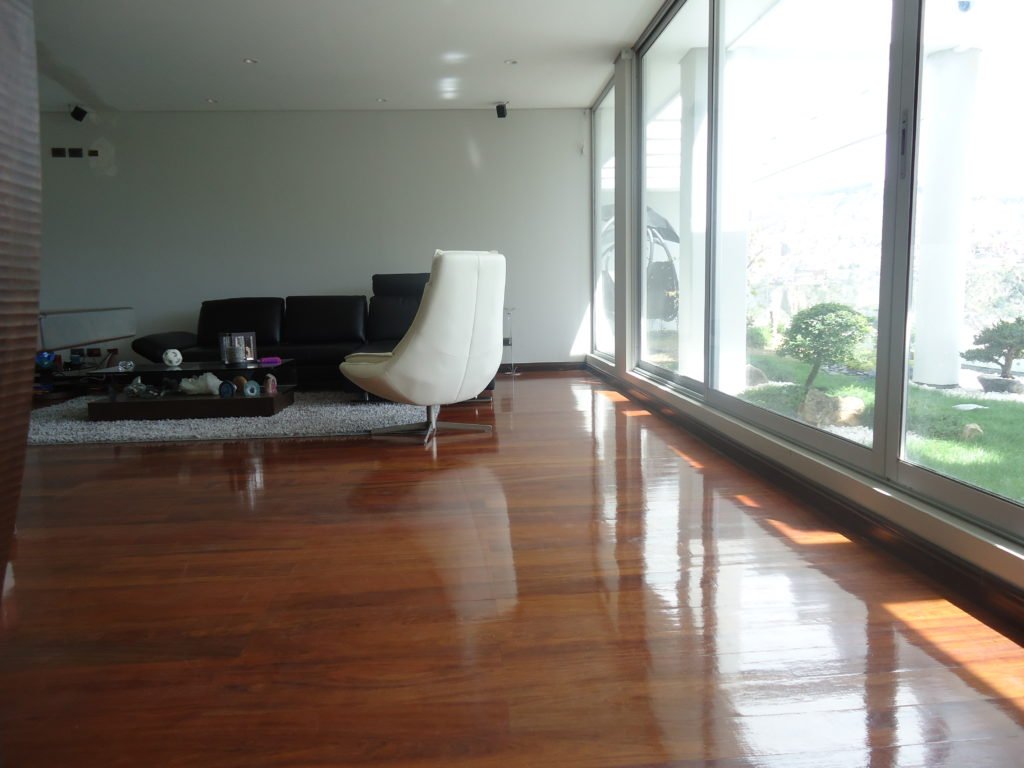Jatoba Wood
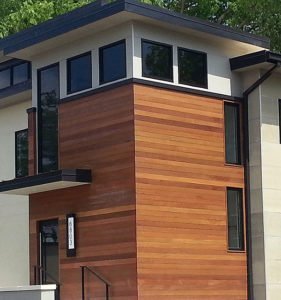
Hymenaea courbaril
Jatoba is probably most commonly known in North America as “Brazilian Cherry,” and it has been adopted largely by the flooring industry. The deep red color is stunning, and the hardness and stability make it an excellent flooring option, so this adoption is pretty natural. But Jatoba is no one-trick pony, and its applications span from inside to outside construction, and it is commonly used as decking, siding, and exterior furniture. In fact, we sell it as decking, but we have also included it in our Alpha wood cladding line with several products all of which have very difference color personalities.
Jatoba in our Alpha Cladding Line
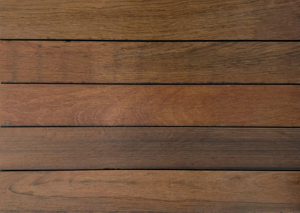
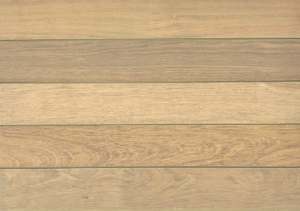
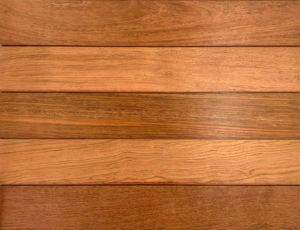
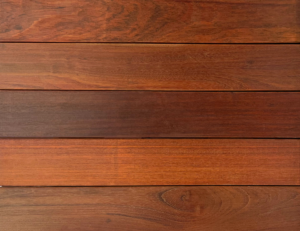
Jatoba’s look can be changed many ways with finish while still giving those tropical undertones and superior performance in tough exterior environments.
Geographic Origin

Jatoba wood is from Brazil and is sourced pretty much across the entire country, meaning that it is not just widely available but it is also consistently available year around. When one side of Brazil is experiencing the rainy season and not moving any lumber, the other side of Brazil is still shipping Jatoba. And vice versa as the rainy season shifts. This is a key point, as many other tropical woods can only be shipped during small windows of time during the year, and therefore sourcing and stocking for many other types of tropical woods can be an issue later in the year with no material shipping.
Jatoba Specifications
| Character | Green | Dry | Units |
| Bending Strength | – | 22510 | psi |
| Max Crushing Strength | 10312 | 11780 | psi |
| Stiffness MOE | – | 2745 | 1000 psi |
| Hardness (Janka) | – | 2690 | lbs |
| Specific Gravity | – | .77 | – |
| Weight | – | 57 | lbs/ft3 |
| Density | – | 62 | lbs/ft3 |
| Radial Shrinkage | – | 3.8 | % |
| Tangential Shrinkage | – | 7.1 | % |
| Volumetric Shrinkage | – | 11 | % |
Jatoba Characteristics
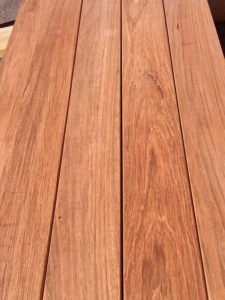
Like most tropical woods, Jatoba is highly resistant to rot and insects, but it can actually be the more preferable wood to use. While dense, it is not nearly as dense and heavy as some of its other Brazilian brothers like Ipe and Cumaru. This slightly lower density means it is still very durable, yet it will acclimate better during the adjustment period from lumber yard to installation and from season to season.
Jatoba is another wood that will change color after it is milled. Initially, the wood is quite light in color, and over time it darkens into a deep red. Eventually, like all wood in exterior situations, it will gray in the sunlight unless regularly treated. The color change is pretty fast, and freshly milled Jatoba can darken after an afternoon spent in the sun.
The greatest feature of Jatoba is the versatility to use the wood both inside as well as outside. With a strong trend towards outdoor living spaces along with merging them to the interior spaces, Jatoba is an excellent choice for your flooring and decking to create a unified living space with beautiful and durable wood throughout.
Jatoba Brazilian Cherry
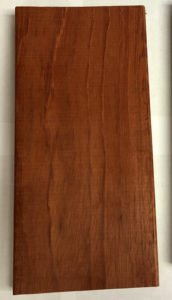
Jatoba goes by two names. “Brazilian Cherry” is more commonly used in the interior flooring industry, while “Jatoba” is more often used as an exterior decking or siding product. They are the same wood source, but they are in most cases a different product because of how they are sold and dried.
J Gibson McIlvain carries Jatoba for both exterior and interior applications. It is important to recognize that, while the same species, these are essentially different products.
The exterior decking product is sold as an S4S, E4E (surfaced on 4 sides, eased on 4 edges) product that is air dried to around an 18% moisture content in order to allow it to acclimate to most exterior conditions.
The interior product is a typical kiln dried hardwood with a moisture content of 6-8% and is sold as rough sawn, or it can be milled to whatever profile your project needs right here at our onsite millworks.
Jatoba Wood
Regardless of what you call it or how you use it, Jatoba can be summed up as a highly durable hardwood with beautiful natural color. It is readily available for a wide range of applications from exterior siding and decking to interior flooring and trim. Whatever your imagination can conjure, this species is up to the task.

